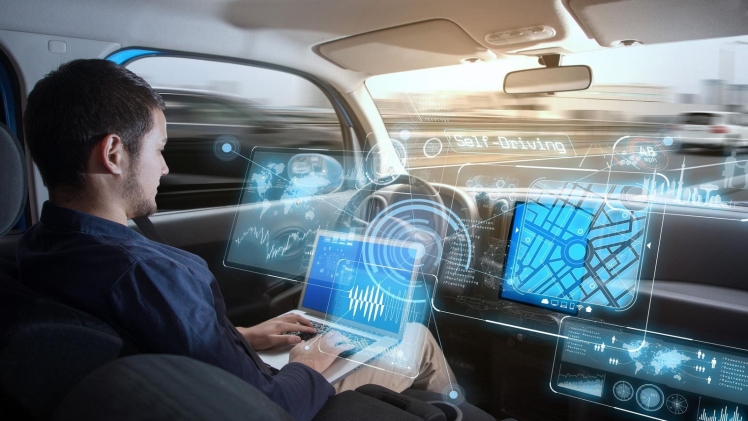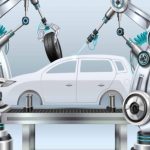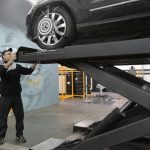Introduction:
The automotive industry, a dynamic force that has been at the forefront of innovation for over a century, continues to redefine itself in the face of technological advancements, environmental concerns, and shifting consumer preferences. This article explores the multifaceted evolution of the automotive sector, delving into key trends, emerging technologies, and the industry’s ongoing efforts to navigate a future marked by sustainability, connectivity, and autonomous driving.
The automotive journey began with the invention of the automobile in the late 19th century. Pioneered by visionaries like Karl Benz and Henry Ford, the industry quickly transitioned from producing handcrafted vehicles to embracing mass production techniques. This shift not only made automobiles more affordable but also laid the foundation for the modern automotive era.
The mid-20th century witnessed the rise of iconic automakers such as General Motors, Ford, and Toyota, establishing a global presence and setting industry standards. As economies grew, so did the demand for automobiles, leading to the creation of diverse models catering to various tastes and needs.
The Technological Revolution:
In recent years, the automotive industry has witnessed a significant shift towards electrification. Electric vehicles (EVs) have gained traction as advancements in battery technology have addressed concerns related to range, charging infrastructure, and affordability. Industry leaders like Tesla have played a pivotal role in popularizing EVs and pushing competitors to invest in cleaner, more sustainable alternatives.
The integration of smart technologies has transformed vehicles into connected devices. Modern cars boast advanced infotainment systems, real-time navigation, and communication capabilities. Features like autonomous emergency braking, lane-keeping assist, and adaptive cruise control highlight the industry’s commitment to enhancing both safety and convenience for drivers.
Sustainability and Environmental Responsibility:
As part of the broader push for sustainability, hybrid and plug-in hybrid vehicles have gained popularity. These models combine traditional internal combustion engines with electric propulsion, offering improved fuel efficiency and reduced emissions. Automakers are increasingly investing in research and development to perfect hybrid technologies.
Carbon-Neutral Initiatives:
To combat climate change, the automotive industry is embracing carbon-neutral initiatives. Several automakers have committed to reducing their carbon footprint through various means, including the use of eco-friendly materials, sustainable manufacturing practices, and investments in renewable energy sources. The goal is to create a more environmentally conscious and responsible supply chain.
Autonomous driving technology has emerged as a focal point for innovation within the automotive sector. From advanced driver-assistance systems (ADAS) to fully autonomous vehicles, the industry is navigating uncharted territory. Companies like Waymo, Tesla, and traditional automakers are investing heavily in research and development to perfect self-driving technology.
Safety and Ethical Considerations:
While autonomous driving promises increased road safety and reduced accidents, ethical concerns and regulatory challenges persist. The industry is grappling with questions related to liability, ethical decision-making algorithms, and the integration of autonomous vehicles into existing traffic systems.
The Shifting Consumer Landscape:
The rise of ride-sharing services and the concept of Mobility as a Service (MaaS) are reshaping how consumers view and use transportation. Companies like Uber and Lyft have disrupted traditional taxi services, providing convenient, on-demand transportation. The integration of electric and autonomous vehicles into MaaS platforms further underscores the industry’s commitment to sustainable and efficient mobility solutions.
Changing Ownership Models:
Traditional notions of car ownership are evolving with the emergence of subscription services and leasing models. Consumers are increasingly interested in flexible, hassle-free alternatives to traditional ownership. This shift is prompting automakers to explore new business models and reimagine the customer experience.
Global Challenges and Collaborative Solutions:
The automotive industry operates within a complex web of regulations aimed at ensuring safety, environmental responsibility, and fair competition. Adapting to diverse regulatory frameworks across different regions is a constant challenge for automakers, requiring a delicate balance between innovation and compliance.
Global challenges, such as the transition to clean energy and the development of autonomous technologies, often necessitate collaboration between industry players and governments. Joint ventures, research partnerships, and cross-industry alliances are becoming increasingly common as the industry seeks collective solutions to shared challenges.
Continued Innovation:
The automotive industry’s journey is far from over, with ongoing innovations in materials, manufacturing processes, and design. Innovations in energy storage, lightweight materials, and artificial intelligence are poised to redefine the driving experience in ways that were once thought impossible.
Environmental Responsibility:
The push for sustainability and environmental responsibility will continue to drive the industry’s agenda. From the development of green technologies to the establishment of circular economies, automakers are committed to reducing their environmental impact and contributing to a more sustainable future.
Conclusion:
The automotive industry, a symbol of human ingenuity and progress, is navigating a future marked by transformative technologies and changing consumer expectations. From the early days of horseless carriages to the electrified, connected, and autonomous vehicles of today, the industry has continuously adapted to societal, economic, and environmental shifts. As it drives into the future, the automotive sector faces both challenges and opportunities, but its commitment to innovation and sustainability ensures that it remains a driving force in shaping the way we move and experience the world.





